
Astrological
Key Terms & Concepts
Astrology has its own unique language and terminology that can sometimes feel overwhelming to newcomers.
This glossary serves as a guide to the core astrological terms and concepts that are fundamental to understanding how astrology works.
From the planets and zodiac signs to the houses and aspects, these are the building blocks that astrologers use to interpret natal charts and horoscopes.
With this resource, you can quickly look up any astrological words or phrases that you may encounter while learning more about this ancient practice on MatchMachine™. Whether you are an absolute beginner or looking to deepen your astrological knowledge, this glossary will help illuminate the meanings of the astrological lexicon.
Refer to it anytime you need a quick reference for essential astrology vocabulary.

Synastry
Synastry is an astrological technique of comparing the natal charts of two people to assess their relationship dynamics and compatibility. It involves analyzing how the planets, signs, houses, and aspects between charts interact with each other.
Some key points about Synastry:
- It provides insight into the strengths and weaknesses of a relationship by revealing the flow of energy between two people. Harmonious connections indicate compatibility while discordant ones point to challenges.
- When interpreting synastry, astrologers look at aspects formed between planets in one chart to planets and points in the other chart. Conjunctions, trines and sextiles tend to be harmonizing while squares and oppositions suggest friction.
- Particular emphasis is placed on how the Sun, Moon, Venus and Mars from one chart interact with the other person's chart. These planets reveal information about identity, emotions, love and sexuality in relationships.
- Synastry can reveal areas of mutual understanding vs potential conflict, as well as the dynamic of power and who tends to be the leader or follower.
- Having connections between inner planets and outer planets between charts generates strong attraction and a feeling of being "destined" to meet.
- Synastry provides insight but a full analysis requires considering both people's natal charts and composite chart to get the whole picture.
In summary, Synastry in astrology is the technique of comparing two natal charts to gauge compatibility and understand relationship dynamics through the planetary connections formed between them.

Mutual Reception
Mutual reception occurs when two planets are in each other's ruling signs in an astrological chart.
For example, Venus is in Aries while Mars is in Taurus. Venus rules Taurus and Mars rules Aries, so the planets receive each other mutually.
This creates a powerful exchange of energies between the planets involved. It connects their significations and blending their planetary influences. The planets empower one another, acting as benefics.
Some key points about mutual reception:
- Mutual reception links the topics associated with each planet together in a complementary way. For the Venus/Mars example, it combines romance, beauty and harmony (Venus) with drive, passion and sexuality (Mars).
- Planets in mutual reception can "trade places" in how they manifest in the chart. Venus in Aries may take on more Mars-like assertiveness while Mars in Taurus channels more Venusian creativity and charm.
- The mutual reception creates communication and ease between the planets. Their energies flow well together and reinforce each other.
- Having mutual reception between chart rulers creates a profoundly close tie between the planets' energies in the native's personality and life.
Mutual Reception can also occur in a synastry context, where there can be mutual receptions between two people. The more receptions there are, the more "at home" the pair feels about themselves.
In synastry, mutual reception occurs when person A's planet falls into the sign ruled by person B's planet, and vice versa. This indicates the planetary energies flow harmoniously between the two individuals.
For example:
- Person A has Venus in Cancer, person B has the Moon in Taurus. The Moon rules Cancer, so it receives Venus. Venus rules Taurus, so it receives the Moon. This connects romance/affection and emotions/nurturing between the couple.
- Person A has Mars in Pisces, person B has Neptune in Aries. Mars rules Aries, so it receives Neptune. Neptune rules Pisces, so it receives Mars. This blends passion/sexuality and spirituality/mysticism in the relationship.
- Person A has Mercury in Scorpio, person B has Pluto in Virgo. Mercury rules Virgo, so it receives Pluto. Pluto co-rules Scorpio, so it receives Mercury. This links communication and transformation in the partnership.
- Person A's Sun in Leo, person B's Sun in Aquarius. The Sun rules Leo, so it receives the other person's Sun. This solar exchange vitalizes identity and purpose.
Having the rulers of each person's chart (chart rulers) in mutual reception can be especially harmonizing and bonding.
Mutual reception allows the planets involved to operate more fluently together, facilitating compatibility. The areas of life associated with the planets are merging points where the synastry flows gracefully.

Astrological Terms
Anaretic Degree: Positioned at the 29° in a sign, the anaretic or "fated" degree is often considered a critical point, carrying intense energy. Traditionally viewed as negative, it presents specific challenges related to the characteristics of the sign. It may symbolize lessons to be learned or hurdles to be overcome, signifying a transitional phase or crisis point.
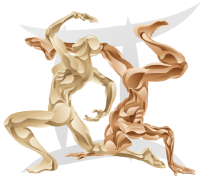


AIR SIGNS: Gemini, Libra, Aquarius
Air Signs: The air signs Gemini, Libra, and Aquarius are connected to the element of air, representing intellect, communication, and sociability. Gemini focuses on information and interaction, Libra emphasizes balance and relationships, while Aquarius stresses innovation and humanitarianism. These signs are often analytical, adaptable, and driven by mental pursuits.
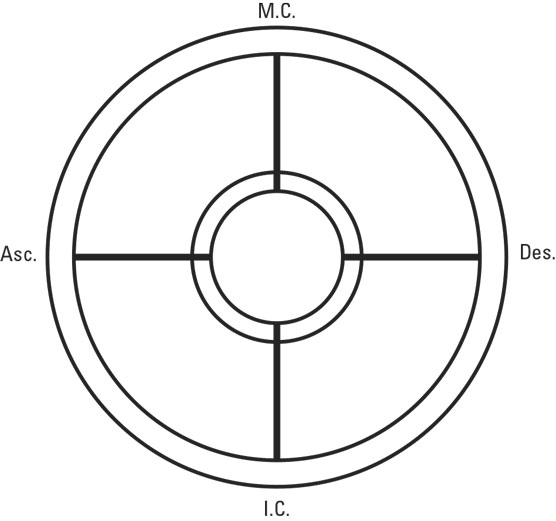
The Angles
Angles: The angles in an astrological chart include the Ascendant (self, personality), Descendant (relationships, partnerships), Midheaven (career, public life), and Nadir (home, family, roots). These cardinal points highlight key areas of an individual's life, reflecting fundamental human experiences and personal growth.
Here is an overview of the angles in astrology:
- The Angles represent the starting points of the four most important houses in a birth chart and help shape core personality.
- The four angles are the Ascendant or rising sign, Imum Coeli (IC), Descendant, and Midheaven (MC).
- The Ascendant is the sign rising on the eastern horizon at the exact time of birth. It denotes approach and physical appearance.
- The IC or Nadir is the lowest point in the chart, representing inner self and roots.
- Opposite the Ascendant is the Descendant, signifying partnerships and one-on-one connections.
- At the top is the MC or midheaven, denoting career, legacy, status, and life path.
- The angles unfold in a clockwise sequence over the course of a day, impacted by the earth's rotation.
- Astrologers pay close attention to planets located near the four angles, as they strongly shape identity.
- The angular houses are the 1st (self), 4th (foundations), 7th (relationships), and 10th (vocation/legacy).
In summary, the angles are pivotal to chart interpretation, acting as a skeleton framework that forms the core essence of a person’s life.

AQUARIUS
Aquarius: Aquarius is the 11th sign of the zodiac, represented by the Water Bearer. Aquarians are known for being independent, original, humanitarian, and intellectual. As an air sign, Aquarians focus on the mental realm and are progressive thinkers who come up with innovative ideas. They have a friendship-oriented attitude and enjoy stimulating conversations. Aquarians are idealistic and have a strong sense of community, striving to make the world a better place. Though they can sometimes come across as aloof or emotionally detached, deep down Aquarians are very caring and compassionate. Overall, Aquarians are creative nonconformists who value freedom, innovation, and working for the greater good.
Arabic Parts: Arabic Parts are specific points calculated from the positions of planets and angles in an astrological chart. Each Part corresponds to unique themes or areas such as love, destiny, or fortune. By interpreting these, astrologers can gain nuanced insights into an individual's character and life path.

ARIES
Aries: Aries is the first sign of the zodiac, represented by the Ram. As a fire sign, Aries energy is passionate, motivating, and exciting. Aries embraces action, initiative, and adventure. They have a competitive nature and thrive off of challenge. They are bold, courageous, and determined. As cardinal signs, Aries likes to kickstart new beginnings and projects. They are direct, honest, and impatient at times. Aries follows instincts over logic and tries to trust their gut. They can be viewed as egoistic or self-centered but they are truly independent spirits who prize autonomy. The warrior planet Mars rules Aries, so they are natural leaders with a fighting spirit. Overall, Aries is a trailblazing sign full of vitality, drive, and fiery energy.

Ascendant Symbol
Ascendant: The Ascendant, also known as the Rising Sign, is the sign that was rising on the eastern horizon at the exact time of your birth. It's one of the most important points in your natal chart. The Ascendant signifies how you present yourself to the world, your physical appearance, your self-expression, and how you act when you first meet someone. It's the energy you radiate and how you make your initial impression.
The Ascendant is the starting point or anchor of the first house in your astrological chart. It sets the stage for the rest of the houses that follow. For example, if someone has an Aries Ascendant, the first house would be in Aries and that person would likely come across as outgoing, enthusiastic, and assertive when first meeting people.
Your Ascendant sign can also influence your personality. It shapes your self-identity, natural instincts, defense mechanisms, and how you adapt to new situations. It becomes part of your persona. Your Sun sign represents your inner self while your Ascendant sign represents your outer self.
Knowing your Ascendant and first house provides insights into your temperament, vitality, appearance, environment, and outlook. It's an important factor to consider along with your Sun, Moon and other planet placements when having an astrological chart reading.
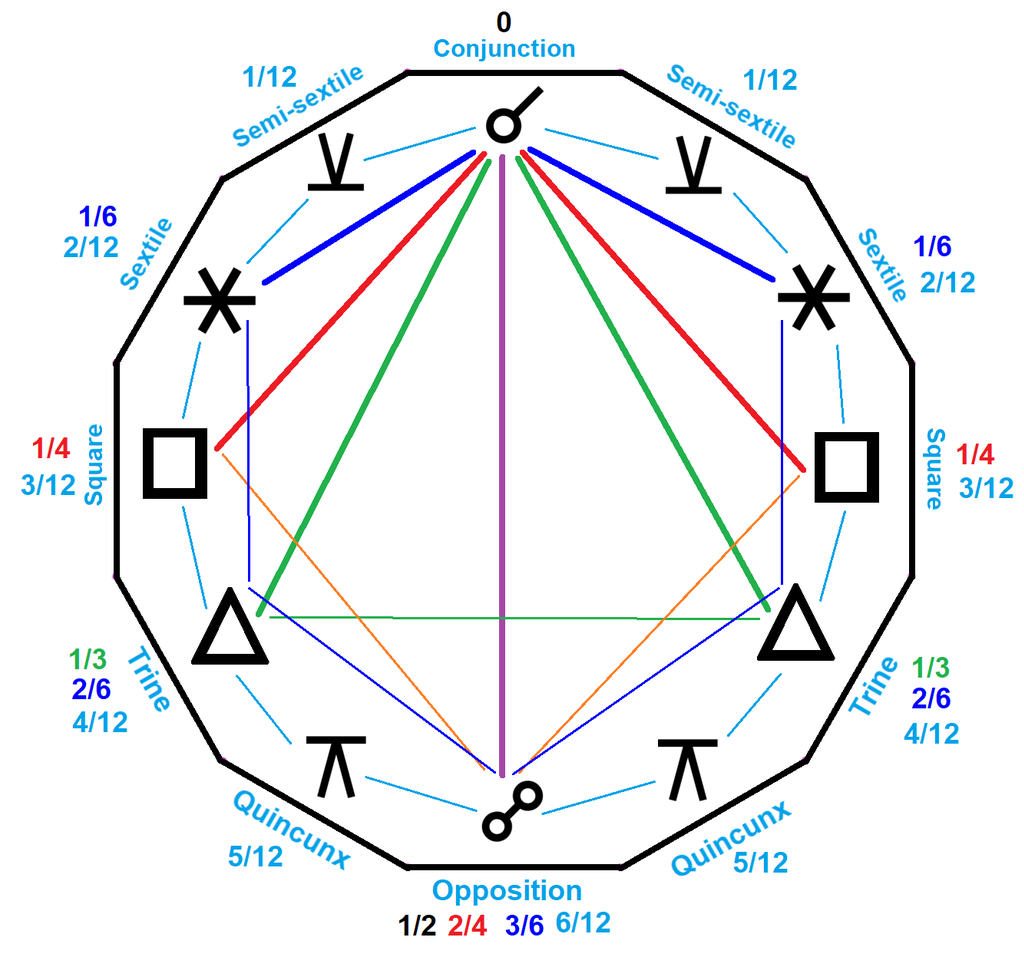
ASPECTS
Aspects: In astrology, aspects are the angles formed between planets in a chart. Key aspects such as conjunction (0°), sextile (60°), square (90°), trine (120°), and opposition (180°) play a significant role in shaping the blend of planetary energies. They influence individual characteristics, relationships, and events by enhancing or challenging the natural flow of energies.
Aspect Pattern: Aspect patterns are specific shapes formed by interconnecting aspects between planets, such as the Grand Cross, T-Square, Stellium, and others. These complex configurations indicate particular energy dynamics, psychological themes, or tendencies in a person's chart. They provide a deeper understanding of character traits and potential life challenges.
Asteroid: Asteroids are minor celestial bodies primarily located in the asteroid belt between Mars and Jupiter. Some prominent named asteroids like Chiron, Ceres, and Pallas are used in astrology. They add nuances to a birth chart, highlighting specific themes or characteristics often overlooked by major planetary aspects.
Astrology: Astrology is a study and belief system that interprets the movements and relative positions of celestial bodies, such as planets and stars, to gain insights into terrestrial events, human nature, and destiny. Through complex systems and symbolic language, astrology explores personality, relationships, and life paths.
Benefic Planets: Benefic planets are considered to have an astrologically favorable, harmonious, or positive influence.
- The two main benefic planets are Venus and Jupiter.
- Venus is linked to beauty, pleasure, relationships, and creativity. Its energy is cooperative and charming.
- Jupiter is associated with expansion, luck, wisdom, and optimism. Its energy enlarges and provides opportunities.
- Both Venus and Jupiter are seen as "greater benefics" which provide protective, uplifting energy.
- The Moon is sometimes considered a "lesser benefic." It governs emotions, instincts, and the public.
- Benefic planet transits or placements in a natal chart suggest periods or traits aligned with ease, growth, and good fortune.
- Strong benefic influence can bestow artistic talents, popularity, prosperity, self-confidence, and success.
- But too much benefic energy can lead to indulgence, laziness, scatteredness, or avoidance of struggle.
- Balancing benefics with discipline from Saturn helps maximize their positive effects for constructive outcomes.
In summary, Venus, Jupiter, and the Moon are considered astrology's key benefics, spreading their helpful and healthful influence within the horoscope and a person's life.
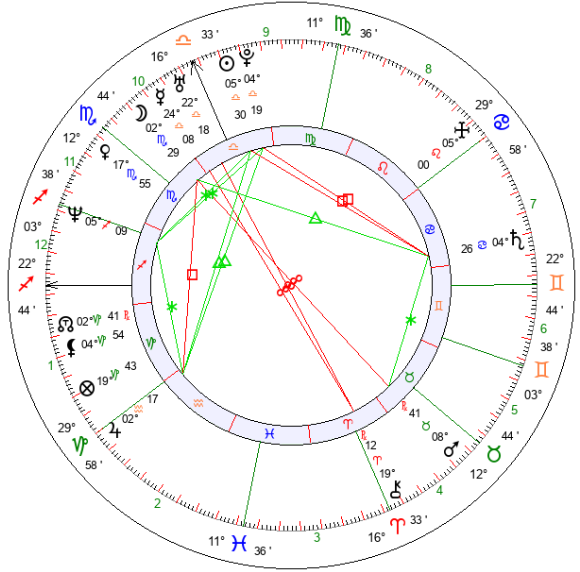
Birth Chart: A birth chart, also known as a natal chart, is a snapshot of the sky at the exact time, date, and location of a person's birth. It serves as the foundation for astrological analysis, depicting the positions of celestial bodies and how they interact, revealing innate characteristics, strengths, challenges, and life potential.

CANCER
Cancer: Cancer is the fourth sign of the zodiac, represented by the Crab. As a water sign, Cancers are guided by emotion and intuition. Known for their nurturing and maternal nature, Cancers care deeply about their loved ones. They are sensitive, sympathetic, and very protective of those they care about. Cancers seek security in both their emotional and material worlds. They are nostalgic, cherishing family traditions and memories. Cancers have a hard shell exterior but are very soft on the inside. They can be moody and withdraw into their shell if feeling insecure. The moon rules Cancer, so they go through phases and need time alone. Overall, Cancers are nurturing, emotionally sensitive souls who thrive when they feel safe and cared for. Family, home, and connections are extremely important to them.

CAPRICORN
Capricorn: Capricorn is the tenth sign of the zodiac, represented by the Sea Goat. As an earth sign, Capricorns are practical, grounded, and responsible. They have a stoic nature and take life very seriously. Capricorns are ambitious, determined, and focused on success. They have strong self-discipline and a solid work ethic, making them excellent at planning and achieving their goals. Capricorns seek status, reputation, and material security. They can be viewed as cold or calculating since they don't let emotions rule them. The planet Saturn rules Capricorn, so they thrive on structure and order. Capricorns develop wisdom through experience and have an old soul quality. Overall, Capricorns are responsible, disciplined, and committed to building a solid foundation in life. They value hard work, integrity, and lasting success over fleeting thrills.
Cardinal Signs: In astrology, the term "Cardinal" refers to one of the three qualities or modalities used to classify the zodiac signs, the other two being "Fixed" and "Mutable." Each of these qualities represents different approaches to engaging with the world and is associated with different parts of each season. The Cardinal signs are Aries (Fire), Cancer (Water), Libra (Air), and Capricorn (Earth). Here's a closer look at the characteristics commonly attributed to the Cardinal modality:
-
Initiative and Leadership: Cardinal signs are known for their ability to initiate and lead. They are often seen at the forefront of activities, driven to take action and start new projects or ideas.
-
Direction and Dynamism: These signs are generally dynamic and full of energy to move things forward. They are often goal-oriented and have a clear sense of direction.
-
Assertiveness: People born under Cardinal signs tend to be assertive and unafraid to take charge of situations. They are often natural leaders who are comfortable making decisions and setting paths.
-
Motivation and Ambition: Cardinal signs are typically ambitious and highly motivated. They have a strong drive to achieve their objectives and can be very focused on their goals.
-
Change Initiators: In the zodiac, Cardinal signs mark the beginning of each season—Aries (spring), Cancer (summer), Libra (fall), and Capricorn (winter). As such, they are associated with the initiation of change and new beginnings.
In a natal chart, an emphasis on Cardinal signs might indicate a personality that's proactive, likes to take charge, and is driven to implement ideas and strategies. They might, however, sometimes be seen as domineering or impatient, given their strong desire to lead and make things happen.
Cardinal signs are catalysts and are known for their ability to create and inspire change, acting as the spark that ignites a new direction. They can be contrasted with the stabilizing influence of Fixed signs and the adaptable nature of Mutable signs. Each modality brings its unique strengths and challenges, contributing to the diversity and balance of astrological profiles.
Chart Ruler: The chart ruler is the planet that rules the sign of the Ascendant in a birth chart. It holds significant influence over the core personality attributes, life focus, and overall theme of the chart. Understanding the chart ruler provides insights into the individual's main drives and areas of growth.
Composite Chart: A composite chart represents the relationship dynamics between two individuals. Created using the midpoints of their natal planets, it symbolizes the "relationship as a separate entity" and can reveal compatibility, shared goals, challenges, and the overall purpose of the relationship.

Conjunction Glyph
Conjunction: An aspect known as a conjunction forms a 0-degree angle between two or more planets in a birth chart. This close proximity allows the planets to blend and amplify their energies, creating powerful synergies or conflicts, depending on the nature of the planets involved.
A brief overview of planetary conjunctions in astrology:
- A conjunction occurs when two or more planets are aligned closely together in the same zodiac sign and degree.
- Conjunctions fuse the planetary energies involved, blending their influences.
- The nature of each planet affects how they operate in combination. For example, Venus-Jupiter conjunctions between two people can give benefits in relationships, while Mars-Saturn conjunctions may cause frustration.
- Conjunctions are considered more potent when faster-moving inner planets are involved, versus slower outer planets.
- A conjunction's impact depends on the signs and houses occupied. For example, a conjunction in Aries or the 1st house is much different than one in Pisces or 8th house.
- Conjunctions often mark major transitions, initiations, or new beginnings in their combined planetary domain.
- They can also amplify character traits or synchronize stages of growth when activated by progressions or transits to the natal chart.
- Ptolemy called conjunctions the most powerful major aspect, acting to "unite and blend the powers of the planets involved."
In summary, conjunctions combine planetary energies in a synchronized concentration of influence, initiating shifts when formed between transiting or natal chart placements.
Critical Degrees : These are specific degrees of the zodiac that are considered potent or highlighted, such as 0, 13, and 26 degrees of cardinal signs. They can add intensity or special significance to a planet's placement in a birth chart, emphasizing certain qualities or themes in a person's life.
Descendant: Positioned directly opposite the Ascendant in an astrological chart, the Descendant provides insights into partnerships, relationships, and how an individual approaches and perceives others. It may reveal qualities sought in others and themes within personal and business relationships.
Dignities: "Dignity" in astrology is a term used to describe the strength, effectiveness, or power of a planet based on its position within a zodiac sign. In traditional astrology, the concept of dignity encompasses several categories that indicate how well the planet can express its nature and carry out its functions. These categories include:
-
Domicile (or Rulership): A planet in the sign it rules is in its domicile. Here, it is most comfortable and powerful. For example, Mercury in Gemini or Venus in Taurus.
-
Exaltation: A planet is said to be exalted in a sign where it is not the ruler but is still honored and highly effective. The energy of an exalted planet is potent and positively expressed, though in a different style than in its domicile. An example is the Sun exalted in Aries.
-
Detriment: When a planet is in the sign opposite to its domicile, it is in detriment. In this position, the planet's energy is often challenged or weakened. It might struggle to express its qualities straightforwardly. For instance, Mars is in detriment in Libra, opposite its ruling sign, Aries.
-
Fall: A planet in the sign opposite its exaltation is said to be in its fall. In this state, a planet can be considered debilitated, finding it difficult to express its positive qualities and potentially manifesting more of its negative traits. For example, Saturn is in its fall in Aries, opposite its exaltation in Libra.
| Planet |
Rulership (Domicile) |
Exaltation |
Detriment |
Fall |
| Sun |
Leo |
Aries |
Aquarius |
Libra |
| Moon |
Cancer |
Taurus |
Capricorn |
Scorpio |
| Mercury |
Gemini, Virgo |
Virgo |
Sagittarius, Pisces |
Pisces |
| Venus |
Taurus, Libra |
Pisces |
Scorpio, Aries |
Virgo |
| Mars |
Aries, Scorpio |
Capricorn |
Libra, Taurus |
Cancer |
| Jupiter |
Sagittarius, Pisces |
Cancer |
Gemini, Virgo |
Capricorn |
| Saturn |
Capricorn, Aquarius |
Libra |
Cancer, Leo |
Aries |
| Uranus |
Aquarius |
Scorpio |
Leo |
Taurus |
| Neptune |
Pisces |
Cancer |
Virgo |
Aquarius |
| Pluto |
Scorpio |
Pisces |
Taurus |
Leo |
Note that:
- Mercury has its exaltation in Virgo, one of its own signs, enhancing its dignities there.
- For the outer planets (Uranus, Neptune, Pluto), traditional rulerships and dignities were assigned later and are more modern interpretations, not universally accepted in all astrological traditions.
- The concept of rulership and dignity in astrology varies with different astrological systems and interpretations, including variations between traditional/classical and modern astrology. For example, traditional astrology doesn't assign rulership of Pisces to Neptune or Scorpio to Pluto, as these planets were not known in ancient times.
Earth Signs: Comprising Taurus, Virgo, and Capricorn, Earth signs derive qualities from the earth element. They are characterized by practicality, material focus, sensibility, and a grounded nature. These signs value stability, hard work, and tangible achievements, often displaying a meticulous and realistic approach to life.
Eclipse - An eclipse occurs when the Sun, Moon, and Earth perfectly align during a new or full moon. In astrology, an eclipse symbolizes major life events, transformations, or revelations, often ushering significant changes, endings, or new beginnings that align with an individual's growth and destiny.
Ecliptic: The ecliptic is the Sun's apparent yearly path across the celestial sphere, forming the basis of the zodiac's formation. It's the path along which the planets move, and the zodiac signs are divisions along this circle, central to astrological interpretations and calculations.
Equator: In geography, the equator is an imaginary line dividing Earth into Northern and Southern hemispheres. In astrology, its location has a bearing on the House system used in a chart, affecting the calculation and interpretation of the houses.
Fire Signs: Aries, Leo, and Sagittarius belong to the fire element, known for their passionate, creative, adventurous, and energetic nature. These signs often seek inspiration, excitement, and self-expression, leading with enthusiasm, courage, and a zest for life.
Fixed Signs: In astrology, "Fixed" is one of the three qualities or modalities, alongside "Cardinal" and "Mutable," which categorize the zodiac signs. Each quality embodies different approaches to life's challenges and changes. The Fixed signs are Taurus (Earth), Leo (Fire), Scorpio (Water), and Aquarius (Air). The characteristics typically associated with the Fixed modality include:
-
Stability and Determination: Fixed signs are known for their strong sense of stability and determination. Once they set their minds to something, they are persistent and resolute in their efforts.
-
Consistency and Reliability: These signs are often seen as dependable and reliable. They value consistency and are seen as the ones who "hold things together" in challenging times.
-
Stubbornness and Resistance to Change: While their steadfast nature is often a strength, it can sometimes manifest as stubbornness. Fixed signs may resist change and can be inflexible in their views or approaches.
-
Focus and Depth: Fixed signs tend to be deeply focused and can dive into projects, ideas, or relationships with intensity. They are thorough and prefer to fully complete tasks before moving on to something new.
-
Resourcefulness and Perseverance: Their ability to stay focused and withstand difficulties gives Fixed signs a particular kind of resourcefulness. They can endure and persist, often outlasting challenges that might overwhelm more flexible or initiating types.
In the cycle of each season, Fixed signs represent the mid-point, where the season is most established and stable. Taurus represents the height of Spring, Leo the midsummer, Scorpio the depth of Autumn, and Aquarius the solid heart of Winter. In a person's astrological chart, a dominance of Fixed energy can indicate a personality that is steadfast, loyal, and enduring but potentially also inflexible or unyielding.
Fixed signs are crucial for maintaining stability and for seeing things through to completion. They offer a sustaining energy, as opposed to the initiating energy of Cardinal signs and the adaptable energy of Mutable signs. Their role is often to continue and uphold the things that Cardinal signs start, providing the endurance and consistency necessary to achieve success.

GEMINI
Gemini: Gemini is the third sign of the zodiac, represented by the Twins. As an air sign, Geminis are intellectual, curious, and excel at communication. They have a youthful enthusiasm and are constantly scanning the environment for new stimuli. Geminis are lively, animated, and charming with their quick wit. They thrive on mental stimulation and are adept at learning quickly and adapting to new situations. Geminis have a split personality and can flip between dual natures. As a mutable sign, they are flexible and multi-faceted. The planet Mercury rules Gemini, so they are natural thinkers, talkers, and idea generators. Geminis get bored easily and need constant variety. Overall, Geminis are inquisitive, clever, and sociable but have a tendency to be flighty or scatterbrained as they juggle multiple interests.
Grand Cross: A grand cross occurs when four planets or points form two oppositions (180° apart) that are also perpendicular in a square alignment (90° apart).
- This creates intense tension, obstacle, and friction between the planetary energies involved.
- The four planets are evenly spaced around the chart in the shape of a large cross, which can stretch across many signs and houses.
- Those with a grand cross have challenges pulling in multiple conflicting life directions. However, it can drive achievement.
- Common struggles include lack of focus, clashing needs between home/career, relationships vs independence.
- Grand crosses teach balance of diverging priorities and interests. Difficult karmic lessons are indicated.
- Having a grand cross is like an ongoing pressure cooker, but mastering its energies yields enormous growth.
- Prominent people with grand crosses include Darwin, Beethoven, from adversity comes their career achievement.
- Transiting and progressed grand crosses time periods of obstacle and crisis that demand successful integration of energies.
In summary, in a natal chart the grand cross represents intrinsic tension between four incompatible areas of life that requires constant balancing.
Grand Trine: A Grand Trine is a harmonious aspect involving three planets positioned approximately 120 degrees apart, forming a triangle in the chart. Often considered beneficial, it symbolizes ease, talent, and flow in the areas represented by the involved planets and signs.
- A grand trine occurs when three or more planets form trine (120°) aspects with each other in a triangular pattern.
- Unlike squares or oppositions, trines facilitate harmony between the planets involved.
- This indicates innate talents and abilities that flow naturally and easily for the individual.
- Grand trines can bestow luck, self-confidence, artistic creativity, charisma, and success.
- However, the ease may lead to laziness, lack of motivation, or neglect of gifts. Challenges may be avoided.
- Planets in different elements (fire, earth, air, water) suggest greater need to integrate grand trine's gifts.
- Having a grand trine is like being born with a full toolbox but still needing to build something with it.
- When aligned with purpose, grand trines confer exceptionally robust talent and potential.
- Transiting and progressed grand trines time periods of fortune, opportunity, prosperity - but must be acted on.
- Notable people with grand trines include Oprah, Taylor Swift, Emma Watson, Bobby Fischer, efficaciously using their natural gifts.
In summary, in a natal chart the grand trine indicates facility with talents bestowed by a harmonic flow of planetary energies that must be consciously developed.
Great Conjunction: The Great Conjunction is an astronomical and astrological event where Jupiter and Saturn converge in the sky. Occurring roughly every 20 years, it symbolizes significant societal shifts, new cycles, and the blending of expansion (Jupiter) and structure (Saturn).
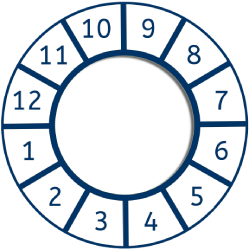
The Houses
Houses: Astrological Houses are 12 divisions of the astrological chart that represent different areas of life. The houses provide a framework for interpreting where the planets and signs were located at the exact time and place of a person's birth. Each house is associated with certain topics and spheres of life and provide insight for how a person engages with the external world. Each house is tied to a different sign of the zodiac.
First House - The house of self. It governs personality, appearance, behaviors, physical characteristics, and early childhood. The Ascendant or Rising sign is the starting point for the houses.
Second House - The house of material possessions and finances. It rules income, belongings, property, money, and self-worth.
Third House - The house of communication, thoughts, and immediate environment. It rules siblings, neighbors, short trips, writing, speaking, and intellect.
Fourth House - The house of home and family. It represents psychological foundations, parents, ancestry, nurturing, and later life.
Fifth House - The house of creativity, children, and recreation. It governs romance, dating, entertainment, leisure, fun, and hobbies.
Sixth House - The house of work and wellness. It rules duty, service, daily routine, pets, sickness, and physical health.
Seventh House - The house partnerships and relationships. It governs marriage, business associations, agreements, consulting, and collaborating with others.
Eighth House - The house of sex, death, and transformation. It rules joint resources, secrets, inheritances, loans, bankruptcy, and mystic experiences.
Ninth House - The house of exploration and broadening horizons. It represents higher education, long distance travel, spirituality, and experiences outside the norm.
Tenth House - The house of career, reputation, and achievement. It governs profession, vocation, status, and contribution to society.
Eleventh House - The house of community, groups, and collective hopes. It represents friends, clubs, associations, social circles, and humanitarian ideals.
Twelfth House - The house of the subconscious mind and soul growth. It rules dreams, secrets, fantasy, escapism, isolation, and past life experiences.
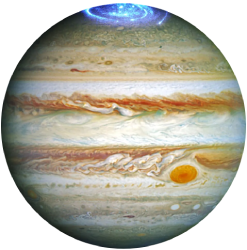
Jupiter : Known as the planet of luck, expansion, and wisdom, Jupiter symbolizes growth, adventure, and optimism in astrology. It governs philosophical thinking, higher education, and spiritual insight, often revealing where one may find opportunities, success, and broad understanding.

LEO
Leo: Leo is the fifth sign of the zodiac, represented by the Lion. As a fire sign, Leos are passionate, expressive, and exude warmth. Leos have a magnetic charisma and radiate a creative, generous spirit. They have boundless energy and enthusiasm and a flair for the dramatic. Leos love being the center of attention and thrive when they are in the spotlight. They are natural leaders and enjoy cultivating an impressive lifestyle. The sun rules Leo, so they have an air of royalty to them even if they are not born into it. Leos are confident, loyal, and possess a fighting spirit. However, they can be stubborn and fall victim to egotism or domineering behavior at times. Overall, Leos are vivacious, theatrical, and radiate a spirited zest for life. They bring excitement to everything they do.

LIBRA
Libra: Libra is the seventh sign of the zodiac, represented by the Scales. As an air sign, Libras are intellectual, fair-minded, and social. Libras strive for balance, harmony, and equity in all areas of life. They have an innate sense of justice and excel at cooperating and forming partnerships. Diplomatic and peace-loving, Libras enjoy cultivating relationships. They are romantic, elegant, and appreciate all things beautiful. The planet Venus rules Libra, so they yearn for a life filled with love, pleasure, and beauty. However, indecisiveness can be a downfall for Libras as they weigh all sides looking for the ideal option. Overall, Libras are charming, refined, and maintain grace under pressure as they navigate life's complexities. Partnership is very important to them.
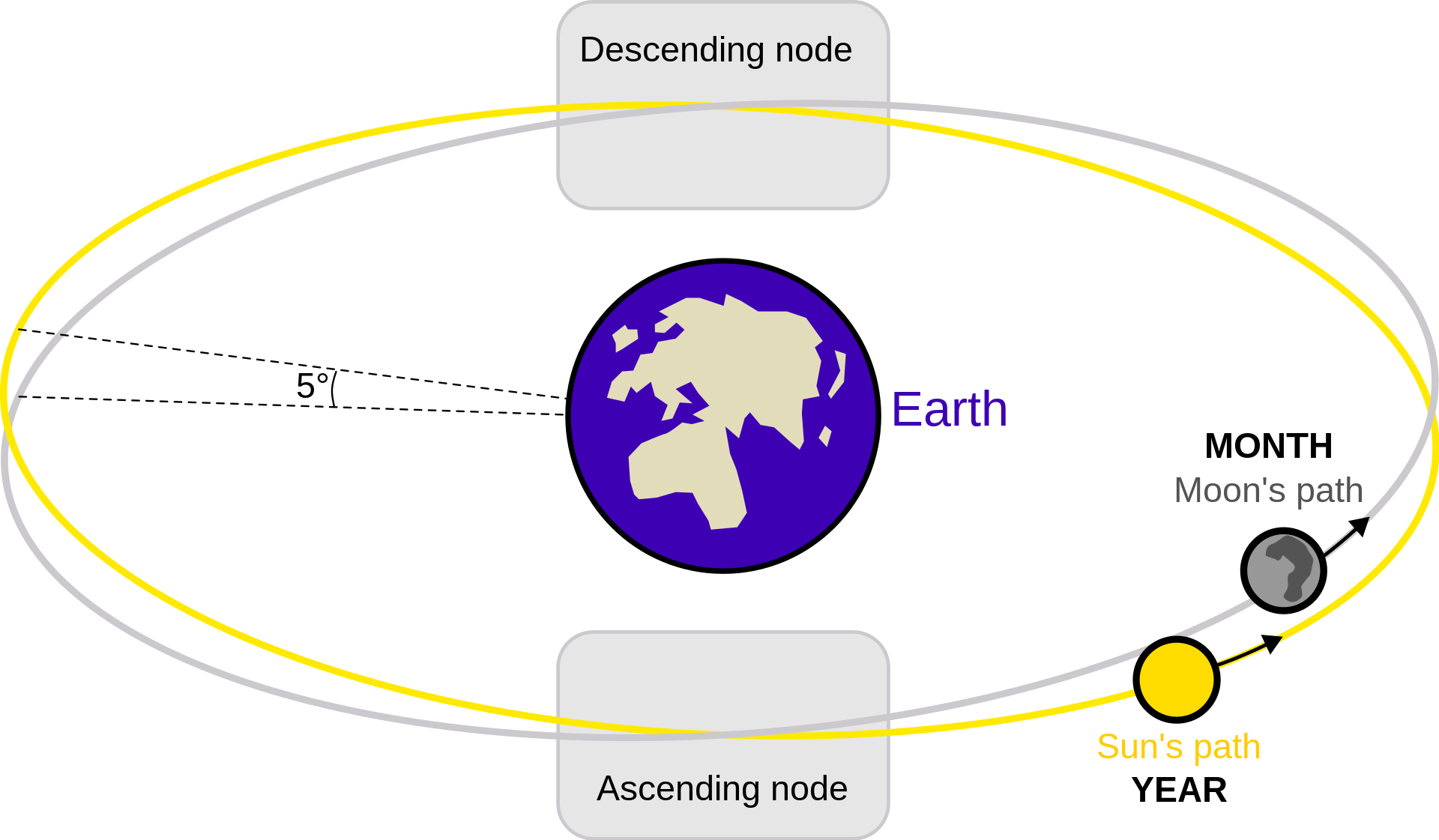
Lunar Nodes
Lunar Nodes : The lunar nodes in astrology represent the intersection points of the moon's orbital path around the earth with the ecliptic (which is the apparent path of the sun from our perspective on earth). The north and south nodes are always directly opposite each other. Here is a brief overview:
North Node: Represents your soul's evolutionary path in this lifetime. It highlights innate talents and qualities to develop. The north node points to new directions for growth.
South Node: Represents challenges, as well as gifts developed in past lives. It is where you feel comfortable and secure, so over-reliance on it can limit further development. The south node connects to your roots.
The nodes move backwards (retrograde) through the zodiac over an 18.6 year cycle. Their position by sign and house in your natal chart reveals your spiritual trajectory - critical areas of development and gifts carried over from the past. Overall, the nodes symbolize destiny and direction in your life path.
Malefic Planets: Malefic planets are considered to have an astrologically challenging, disruptive, or destructive influence.
- The two main malefic planets are Mars and Saturn.
- Mars is linked to aggression, conflict, and war. Its energy can be overly forceful, angry, or violent.
- Saturn is associated with restriction, adversity, and gravity. Its energy can be depressive or oppressive.
- Both Mars and Saturn are seen as the "greater malefics" which test character and bring turbulent energies.
- The nodes of the Moon are also seen as "lesser malefics" representing karmic fate.
- Malefic transits or natal placements suggest periods or traits aligned with strife, cruelty, and misfortune.
- Strong malefic influence can manifest as aggression, sadness, loss, suffering, enemies, and violence.
- However, Mars brings courage and motivation, while Saturn confers patience, wisdom and strength.
- Malefics teach life lessons, build resilience, and foster growth when handled constructively.
In summary, Mars and Saturn are considered the key malefic planets which can complicate life but also cultivate inner fortitude when managed positively.

Mars: The planet of energy, action, and desire, Mars symbolizes drive, aggression, and sexuality in astrology. It indicates how one asserts themselves, seeks goals, and approaches conflict, reflecting ambition, courage, and willpower.
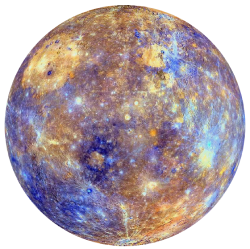
Mercury: Known as the planet of communication and intellect, Mercury governs thinking styles, information exchange, learning, and decision-making in astrology. It represents how one perceives, processes, and shares ideas, often highlighting intellectual agility and curiosity.
Midheaven: The point at the top of the natal chart, known as the Medium Coeli (MC), the Midheaven indicates career goals, public image, reputation, and achievements. It reflects one's ambitions, social standing, and how others perceive them in the public sphere.
Modalities: These are the three qualities assigned to zodiac signs—cardinal (initiating), fixed (stabilizing), and mutable (adapting)—reflecting how they approach life and react to circumstances. Each modality brings unique characteristics and motivations.

Moon: In astrology, the Moon represents emotions, instincts, motherhood, and nurturance. It governs needs, feelings, unconscious patterns, and intuitive responses, often revealing the emotional undercurrents and inner needs that drive behavior.
Moon Void of Course:
- It refers to periods when the moon is transitioning between astrological signs but hasn't yet entered the next sign.
- The moon is not interacting with any major planets during the void of course, so it is unaspected.
- Moon voids occur for up to a few hours before the moon shifts into the next sign.
- Actions initiated during moon voids often need adjustment later. Plans may not come to fruition as expected.
- It is best suited for minor tasks, reflection, meditation, and tying up loose ends vs starting major new projects.
- Moon voids can bring fluctuating emotions, fatigue, and impressionability. Remaining flexible is wise.
- Each zodiac sign has a different flavor - fire signs can spark restlessness while water signs summon introspection.
- The number of moon voids per month varies, usually totaling 2-3 days collectively.
- Checking a moon void calendar allows you to schedule important activities for optimal productivity.
In summary, the moon void of course represents a pause before the moon engages its next gear, best used for winding down rather than revving up.
Mutable Signs: In astrology, the term "Mutable" refers to one of the three qualities or modalities, alongside "Cardinal" and "Fixed," that are used to categorize the zodiac signs. These qualities are thought to represent different types of energy, temperament, or modes of expression among the signs. Each quality is associated with four signs, one from each element (Fire, Earth, Air, Water).
The Mutable signs are Gemini (Air), Virgo (Earth), Sagittarius (Fire), and Pisces (Water). Here's a breakdown of the key traits associated with the Mutable modality:
-
Adaptability: Mutable signs are typically considered the most flexible and adaptable of all the modalities. They can adjust to changing circumstances and often have an easier time coping with transitions than Cardinal or Fixed signs.
-
Versatility: People born under Mutable signs are often seen as versatile and open to new ideas and experiences. They tend to have a wide range of interests and can be jack-of-all-trades types.
-
Changeability: While being adaptable can be a strength, it can also manifest as inconsistency or indecisiveness. Mutable signs might change their opinions, ideas, or plans more frequently than others.
-
Resourcefulness: Their ability to adapt and embrace change makes Mutable signs resourceful. They can often find creative and unexpected solutions to problems.
-
Communication Skills: Especially in the case of Gemini and Sagittarius, Mutable signs are often associated with strong communication skills. They can articulate ideas and share knowledge effectively.
In a natal chart, the distribution of Cardinal, Fixed, and Mutable qualities can give insight into a person's overall approach to life. For instance, a chart dominated by Mutable energy might suggest a personality that's flexible, adaptable, and open to change, but potentially also restless or inconsistent.
Mutable signs are thought to represent the end of each season, where change is imminent, and this is reflected in their adaptable, flexible nature. They are seen as the editors of the zodiac, who can take the initiatives started by Cardinal signs and the stability maintained by Fixed signs and prepare for the transition to the next phase.
Nadir: Positioned opposite to the Midheaven, the Nadir (Imum Coeli) relates to one's roots, home, inner world, and personal life. It symbolizes the foundation, family history, private self, and emotional grounding.

Natal Chart
Natal Chart: A natal chart, also known as a Birth Chart, is a personalized astrological diagram capturing the planetary positions at one's exact time, date, and place of birth. It serves as a cosmic map, offering insights into personality traits, potential, relationships, career, and life path.
Opposition: An opposition is an aspect formed when two planets are situated approximately 180 degrees apart in a chart. It often indicates tension, challenge, or polarity that requires integration, balance, and awareness to manifest constructively.

PISCES
Pisces: The twelfth zodiac sign, Pisces is ruled by Neptune and is a mutable water sign. Compassionate, sensitive, and mystical, Pisces embodies empathy, intuition, and spiritual awareness. It seeks connection, understanding, and often expresses itself through art, healing, and self-sacrifice.
Planet: In astrology, the term "planet" includes the Sun, Moon, Mercury, Venus, Mars, Jupiter, Saturn, Uranus, Neptune, and Pluto. Each of these celestial bodies symbolizes specific psychological functions and themes in an individual's birth chart. Astrologers are fully aware that the Sun and Moon are not Planets, but they are often called Planets for the sake of Brevity.
.png)
Pluto: Known as the planet of transformation and power, Pluto governs destruction, rebirth, obsession, and control in astrology. It reveals where deep-seated changes and empowerment can occur, often exposing hidden truths, fears, and profound growth.
Prograde: In astrology, "prograde" refers to the usual, forward motion of a planet through the zodiac. It indicates that a planet is not in retrograde and is exerting its standard influence according to astrological interpretations.
Progressed Chart: A progressed chart is derived from one's natal chart, advancing a day for each year of life. It reflects internal evolution, development, and the unfolding of personal potentials over time. It's a dynamic tool to explore ongoing trends and phases in one's life.
Quincunx: An aspect formed when two planets are approximately 150 degrees apart, the quincunx signals a need for adjustment, adaptation, or resolution of conflicting energies. It can bring discomfort, ambiguity, and requires careful navigation to integrate.
Rectification: A specialized process in astrology used to determine a person's accurate birth time when it's unknown or uncertain. By analyzing significant events and life milestones, the astrologer works backward to fine-tune the birth time, ensuring a precise natal chart.
Retrograde: This is the apparent backward motion of a planet as viewed from Earth, an illusion caused by differences in orbital speeds. In astrology, retrograde periods often signify internal reflection, review, and reevaluation of the themes related to the retrograde planet.
- When a planet is retrograde, it appears to be moving backwards from our vantage point on Earth. This is an optical illusion.
- Mercury, Venus, Mars, Jupiter, Saturn, Uranus, Neptune, and Pluto all experience retrograde periods that happen regularly.
- A retrograde planet's energy is turned inward, reflective, and subdued. It may generate confusion, anxiety, or delays.
- Each retrograde period lasts several weeks annually. Astrologers consider Mercury's to be most impactful in day-to-day life.
- During a retrograde, it's best to reflect rather than take action in the areas of life ruled by that planet. Planning and research is favored.
- Often there are misunderstandings, breakdowns in communication, or technical problems when Mercury is retrograde.
- Retrogrades are considered important transits that provide opportunities for reassessment, course-correction, introspection, and inner growth.
- Paying attention to any retrogrades happening by transit or in a natal chart can help provide useful guidance and perspective.
So in summary, retrograde motion has a slowing, recalibrating effect on a planet's energies which is thought to have nuanced impacts in astrological interpretation and timing.
Rising Sign: Also referred to as the Ascendant, the rising sign is the zodiac sign appearing on the eastern horizon at the time of birth. It indicates one's outward behavior, first impressions, and approach to life, shaping the lens through which the world is perceived.
Ruling Planet: In astrology, a "ruling planet" is the planet that is the dominant planetary influence for a particular zodiac sign or astrological chart. Each of the twelve zodiac signs is associated with a planet (or in some cases, a luminary, like the Sun or Moon) that is considered its ruler. The concept of a ruling planet is central to astrological interpretations, influencing a person's characteristics, personality traits, and potentially their destiny.
Here are the traditional rulerships of the planets over the zodiac signs:
- Aries: Mars
- Taurus: Venus
- Gemini: Mercury
- Cancer: Moon
- Leo: Sun
- Virgo: Mercury
- Libra: Venus
- Scorpio: Mars (and in modern astrology, Pluto is often considered a co-ruler)
- Sagittarius: Jupiter
- Capricorn: Saturn
- Aquarius: Saturn (and in modern astrology, Uranus is often considered a co-ruler)
- Pisces: Jupiter (and in modern astrology, Neptune is often considered a co-ruler)
The ruling planet of a sign is said to have a strong influence over the sign's expression, imbuing it with its traits, motivations, and energy. For example, Mars, as the ruler of Aries, is associated with assertiveness, aggression, and initiative, qualities that are often attributed to the sign Aries.
In an individual's astrological chart, the ruling planet of their Sun sign is of particular importance and can indicate vital aspects of their personality and life path. Additionally, the concept of a ruling planet can be extended to other facets of the chart, such as the Ascendant (or Rising Sign) and other personal planets, contributing to a more nuanced interpretation of the chart.

SAGITTARIUS
Sagittarius: Sagittarius is the ninth sign of the zodiac, represented by the Archer. As a fire sign, Sagittarians have an abundance of energy, optimism, and enthusiasm. Sagittarians have an adventurous spirit and thrive on freedom and independence. They have a passion for exploration, both literally through travel and philosophically through ideas. Sagittarians have an insatiable curiosity and lively intellect. They openly embrace experiences that expand their understanding. The planet Jupiter rules Sagittarius, endowing them with luck and an expansive, future-oriented perspective. Sagittarians are straight-shooting, honest, and can be blunt or tactless at times. Overall, Sagittarians are wanderers and philosophers at heart who chase meaning, truth, and new horizons. They bring humor, candor, and infectious joy to everything they do.

Saturn: The planet of structure, discipline, and challenge, Saturn governs limitations, responsibilities, and order in astrology. It reflects where hard work, patience, and perseverance are required, often teaching valuable lessons through trials and maturation.
Saturn Return: A significant astrological event, the Saturn Return marks Saturn's return to its natal position, occurring around ages 27-30, 58-60, and 88-90. It often signifies a period of self-discovery, restructuring, and major life shifts, as one steps into a new phase of maturity and responsibility.
Key Points:
- The Saturn return is when Saturn in the sky returns to the same zodiac sign and degree it occupied at the time of your birth.
- It occurs approximately every 29-30 years, around ages 29-30, 58-60, and 87-90.
- The Saturn return marks major turning points and transitions in life. The first one is linked to maturity and adulthood.
- It's a time of harvesting what you have sown in life up until then. Responsibilities and accountability increase.
- Challenging Saturn themes may arise like facing limitations, dealing with authority figures, and overcoming fears or rigidities.
- There can be tests, turbulence, or orientation toward a more focused structured path aligned with your true priorities.
- The Saturn return initiates reflection on accomplishments and seeks to build maturity from what has been learned.
- Handled well, it strengthens character and develops wisdom. But resistance leads to increased karmic burdens over time.
- Success lies in accepting Saturn's disciplining conditions rather than fighting against them. Commitments deepen.
In summary, the cyclic Saturn return requires shedding the old to make space for a new chapter in life, defined by increased wisdom, responsibility, and authority over one's direction.

SCORPIO
Scorpio: Scorpio is the eighth sign of the zodiac, represented by the Scorpion. As a water sign, Scorpios are intensely emotional, passionate, and magnetically charming. Scorpios have a mysterious aura about them and tend to be secretive and private. They have keen insights into human nature and cannot be easily fooled. Scorpios can be very focused, driven, and committed when they set their sights on a goal. They are brave in the face of adversity and will fearlessly confront issues. The planet Pluto rules Scorpio, giving them a transformative energy. Scorpios need to feel in control and can be stubborn, jealous, or manipulative. Overall, Scorpios are complex souls who operate on a profoundly emotional level. They desire deep connections and meaning beyond the surface.

Sextile Glyph
Sextile: A 60-degree aspect between two planets, the sextile represents an easy flow and compatible use of planetary energies. It promotes collaboration, opportunity, and often brings talents and skills into a harmonious working relationship.
Sign: One of the 12 zodiac signs, each corresponding to a constellation. These signs provide core personality traits, inclinations, and behaviors, forming the fundamental archetypes in astrology.
Here is an overview of the 12 astrological Sun signs:
Aries (March 21 - April 19) - First sign, ruled by Mars. Cardinal fire sign associated with initiative, impulsiveness, independence, and competitiveness.
Taurus (April 20 - May 20) - Second sign, ruled by Venus. Fixed earth sign associated with stability, dependability, materialism, and sensuality.
Gemini (May 21 - June 20) - Third sign, ruled by Mercury. Mutable air sign associated with communication, intellectualism, adaptability, and restlessness.
Cancer (June 21 - July 22) - Fourth sign, ruled by the Moon. Cardinal water sign associated with emotion, nurturing, protectiveness, and sensitivity.
Leo (July 23 - August 22) - Fifth sign, ruled by the Sun. Fixed fire sign associated with drama, pride, leadership, and extroversion.
Virgo (August 23 - September 22) - Sixth sign, ruled by Mercury. Mutable earth sign associated with criticism, practicality, organization, and perfectionism.
Libra (September 23 - October 22) - Seventh sign, ruled by Venus. Cardinal air sign associated with harmony, cooperation, partnerships, and indecision.
Scorpio (October 23 - November 21) - Eighth sign, ruled by Pluto. Fixed water sign associated with intensity, secrecy, passion, and vindictiveness.
Sagittarius (November 22 - December 21) - Ninth sign, ruled by Jupiter. Mutable fire sign associated with adventure, philosophy, optimism, and tactlessness.
Capricorn (December 22 - January 19) - Tenth sign, ruled by Saturn. Cardinal earth sign associated with discipline, status, conservatism, and pessimism.
Aquarius (January 20 - February 18) - Eleventh sign, ruled by Saturn and Uranus. Fixed air sign associated with unconventionality, technology, humanitarianism, and detachment.
Pisces (February 19 - March 20) - Twelfth sign, ruled by Jupiter and Neptune. Mutable water sign associated with spirituality, creativity, compassion, and escapism.

Square Glyph
Square: A 90-degree aspect between planets, the square creates friction, tension, and challenges between the energies involved. It drives growth through conflict and resolution, demanding effort, and adaptability to overcome obstacles.
Stellium: A grouping of three or more planets in a sign or house, a stellium brings intense focus and concentration to the attributes and themes of that specific area, often dominating the birth chart's expression.

Sun Sign: The Sun Sign is the Sign that most people are familiar with. It is the zodiac sign in which the Sun occupied at your time of birth, determined by the month and day. When people ask "What's your Sign?", this is the Sign they are asking for. The Sun sign represents the ego, and central self-expression, and is often what people identify with most readily.
Synastry: The comparison and interaction of two natal charts to analyze relationship compatibility. Synastry reveals the dynamics, strengths, challenges, and potentials within a relationship, whether romantic, familial, or professional.
- Synastry is the comparison of two natal charts, typically in the context of relationships, to analyze compatibility and areas of mutual understanding.
- It involves overlaying charts to see how one person's planets connect to the other person's planets, points, and house placements.
- Aspects between charts are studied to reveal relationship dynamics, strengths, weaknesses, and potential growth areas.
- Favorable synastry aspects like trines and sextiles indicate harmony, while challenging aspects like squares denote friction.
- Specific planetary placements also reveal how two people interact—for example, one's Venus in aspect to another's Mars can indicate romantic and sexual compatibility.
- Synastry aims to discern whether a relationship is fulfilling, frustrating, destined, or challenging for each individual based on astrological factors.
- It examines how two people come together, complement each other, foster mutual growth, and forge an energetic bond revealed in their combined charts.
- Analyzing synastry is a key technique astrologers use for relationship astrology, including areas like compatibility and soulmate connections.
In summary, synastry analysis in astrology examines the planetary dynamics between two individuals to better understand how they interact in a relationship context.

Taurus
Taurus: Taurus is the second sign of the zodiac, represented by the Bull. As an earth sign, Taureans value stability, reliability, and consistency. They are grounded, practical, and strongly sensual. Taureans enjoy creature comforts and material pleasures. They move slowly and steadily toward their goals. Taureans are loyal, determined, and hardworking. They thrive on developing mastery and expertise. The planet Venus rules Taurus, so beauty, art, and nature are important to them. Though viewed as stubborn, Taureans are simply steadfast and uncompromising. They find change difficult. Overall, Taureans are warmhearted, devoted, and have an enduring, down-to-earth nature. They deeply appreciate life's simple joys and comforts.
Transit: Refers to the current position of a planet as it moves through the zodiac. Transits interact with the natal chart, activating different life areas and providing opportunities, challenges, or shifts in various aspects of life.
Daily horoscopes are essentially the comparison of the current planetary positions (the sky as it looks now) to the Natal Chart (aka Birth Chart).
A brief overview of transits in astrology:
- Transits refer to the continuous motion of the planets through the zodiac in real-time.
- As planets transit through the signs and over natal chart points, they create unique astrological energy patterns.
- Transits activate different parts of a natal chart, triggering developmental phases or challenging periods.
- Slower-moving outer planets like Saturn and Uranus mark long-term shifts when transiting a sign or house cusp.
- Faster inner planets like Mercury and Venus create shorter transit influences, often lasting days or weeks.
- Major transit examples are Saturn's return at age 29-30 and Uranus oppositions around age 40.
- Transits are interpreted to understand what astrological energies are affecting someone at a given time and how that impacts them.
- Transit forecasts can provide insight about key dates, developmental milestones, favorable periods, and wakeup calls.
- Comparing current transits to the natal chart reveals a cyclic astrological weather forecast for growth and change.
In summary, tracking planetary transits is a primary technique in astrology used for prediction, timing, guidance, and unlocking the evolving potentials of the natal chart over time.

Trine Glyph
Trine: A harmonious 120-degree aspect between planets, the trine supports the easy and compatible blending of energies. It enhances natural talents, facilitates growth, and often signifies areas of ease and flow in life.
Triplicities: Groupings of fire, earth, air, and water signs based on the elemental affinity. These categories reflect a shared nature and approach to life, infusing the signs with common traits and expressions.
Unaspected Planet: A planet is considered unaspected when it forms no major aspects (conjunctions, sextiles, squares, trines, oppositions) to other planets.
Here is a brief overview of unaspected planets in astrology:
- A planet is considered unaspected when it forms no major aspects (conjunctions, sextiles, squares, trines, oppositions) to other planets.
- Unaspected planets operate in their own distinct way since they are unaffected by other chart energies.
- They can act as a "wild card" planet, expressing their traits in an autonomous and pure fashion.
- Unaspected Sun: Strong creative independence; may struggle sharing the spotlight.
- Unaspected Moon: Emotionally self-contained; doesn't naturally pick up on others' feelings.
- Unaspected Mercury: Thinks and communicates in a uniquely individualistic way.
- Unaspected Venus: Relates to beauty, art and love in a singular style.
- Unaspected Mars: Unrestrained drive and energy; can be prone to accidents.
- Unaspected planets are seen as operating on their own circuit or wavelength.
- They require conscious development and integration with the rest of one's chart for balance.
In summary, an unaspected planet is like a solo actor on stage - its expression stands alone versus being molded through relationships with other astrological influences.

Uranus: The planet of change, rebellion, and innovation, Uranus governs revolution, eccentricity, and technology in astrology. It catalyzes breakthroughs, surprises, and sudden shifts, often urging freedom from conventional norms.

Venus: The planet of love, beauty, and aesthetics, Venus governs romance, art, luxuries, values, and pleasure in astrology. It reflects how individuals relate, appreciate, and find harmony, often highlighting their social graces, artistic talents, and attractions.

VIRGO
Virgo : Virgo is the sixth sign of the zodiac, represented by the Virgin. As an earth sign, Virgos are grounded, practical, and hardworking. Virgos are highly analytical and have excellent critical thinking skills. They pay attention to details and excel at improving inefficient systems. Virgos are service-oriented and caring, desiring to be helpful to others. They are modest, humble, and unpretentious. The planet Mercury rules Virgo, making them adept communicators and effective organizers. However, Virgos can be overly critical, fretful, and perfectionistic. They worry a lot and feel restless until everything is flawless. Overall, Virgos are methodical, conventional, and value precision in all areas of life. They cultivate effective routines and processes aimed at productive service.
Void of Course: A period when a planet makes no major aspects before changing signs, often considered a time of pause, reflection, or unpredictability in astrological interpretation.
Water Signs: Cancer, Scorpio, and Pisces are the water signs, guided by emotions and intuition. They embody empathy, sensitivity, depth, and often seek emotional connection, understanding, and healing.
Yod: A rare aspect pattern formed by two quincunxes and a sextile, known as the "Finger of God." The Yod indicates a pivotal life event or profound transformation, often requiring intense focus, alignment, and fulfillment of a unique destiny.
Zodiac: A belt of celestial space containing the Sun's apparent path, divided into 12 equal parts, each named after the constellation that originally appeared in its sector. It's the foundational framework of astrology, reflecting the cosmic rhythm and archetypal principles.
|

Ben Baker, CEO
About the Author
Ben has practiced Astrology for over 35 years and is a certified Cognitive Behavioral Therapist (CBT) Practitioner. Ben holds 11 patents for the core functions that all dating sites now use today. See Ben's Bio for more info.
|


































.png)










Comments